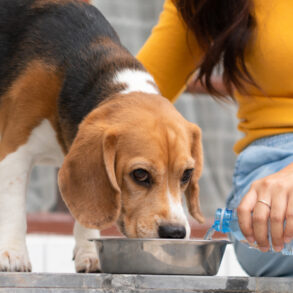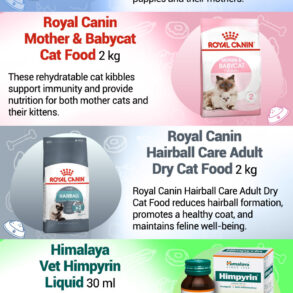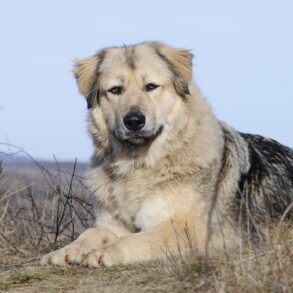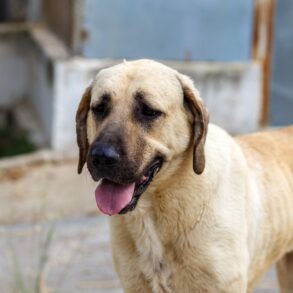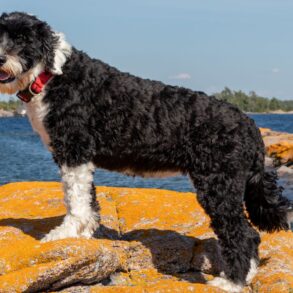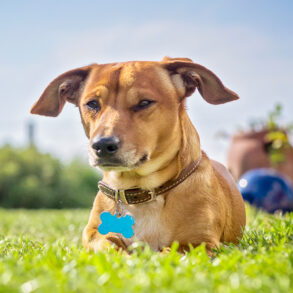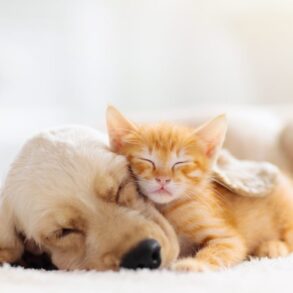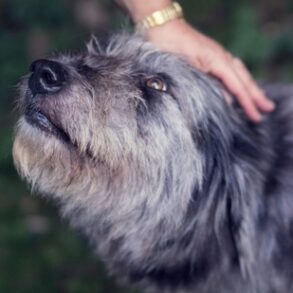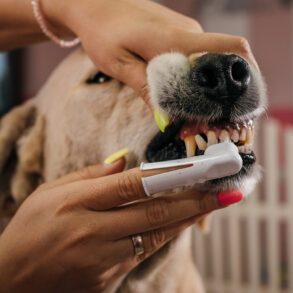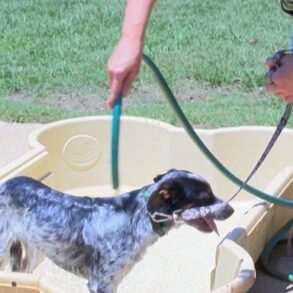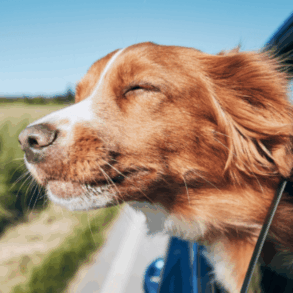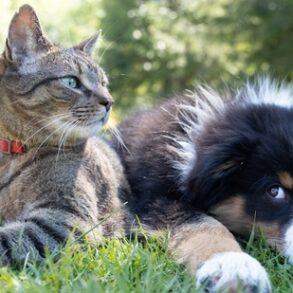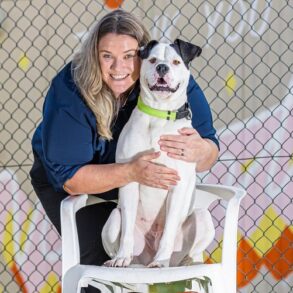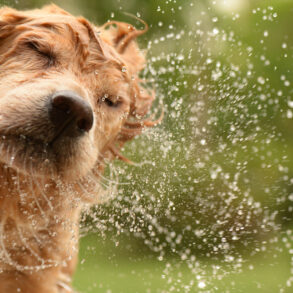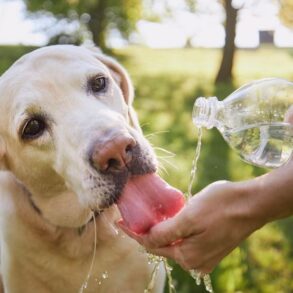Over the past two days, the tri-state area has suffered from smoky skies and diminished air quality. Medical experts have advised residents with heart or lung disease to avoid outdoors.
But smoke isn’t just irritating and harmful for people. Veterinarians are reminding animals owners that the bad air quality isn’t just tough on humans, it takes a toll on animals too.
The Record recently spoke to Dr. Sandra Faeh, president of the American Veterinary Medical Association (AVMA) about how to protect pets during this time.
How does wildfire smoke affect pets?
“Smoke from wildfires can be just as harmful to pets as it is to humans, if not more so. Pets can experience a range of health issues, including coughing, gagging, eye irritation, and difficulty breathing when exposed to smoke. The particulate matter in wildfire smoke can irritate the respiratory tract, leading to inflammation and potentially exacerbating existing conditions. Even healthy animals can suffer from smoke exposure, which can cause both immediate and long-term health effects. It’s crucial to understand that if you’re feeling the effects of smoke, your pets are likely experiencing them too, often to a greater degree due to their smaller size.”
Which pets are most at risk?
“While all pets can be affected by wildfire smoke, certain groups are particularly vulnerable. Pets with pre-existing cardiovascular or respiratory diseases are at the highest risk and should be
monitored very closely during periods of poor air quality. This includes animals with conditions like asthma, chronic bronchitis, or heart disease.
“Additionally, brachycephalic breeds – those with flat faces like bulldogs, pugs, and Persian cats – are more susceptible. Young animals, senior pets, and those with compromised immune systems are also at increased risk. It’s important to note that birds are extremely sensitive to air quality changes and should be given special consideration. Even brief exposure to smoke can be dangerous for them.”

What signs should pet owners watch for?
“Pet owners should be vigilant for any changes in their animal’s behavior or physical condition. Key signs to watch for include coughing or gagging, difficulty breathing or increased effort when breathing, open-mouth breathing (especially in cats), wheezing, nasal discharge, and excessive eye watering or redness. You might also notice increased fatigue, weakness, or reluctance to move. Some pets may show signs of disorientation or stumbling.
“Changes in eating or drinking habits can also be indicative of smoke-related issues. In birds, you might observe tail bobbing, which is a sign of respiratory distress. If you notice any of these symptoms, especially if they persist or worsen, it’s crucial to consult your veterinarian immediately. Early intervention can prevent more serious health complications.”
How can I protect my pets from wildfire smoke?
“The best protection is prevention, and that starts with keeping your pets indoors as much as possible during periods of poor air quality. Keep windows and doors closed to minimize smoke infiltration into your home. For added protection, consider using air purifiers with HEPA filters in the rooms where your pets spend the most time.
“When pets need to go outside, keep their outdoor time as brief as possible – just long enough for bathroom breaks. Avoid any strenuous activity outdoors, as increased respiration can lead to greater smoke inhalation. For dogs that require more exercise, focus on indoor activities. It’s also important to provide plenty of fresh water, as good hydration can help the body process toxins more effectively. Lastly, if you have outdoor pets, bring them inside until the air quality improves.”
What about exercise for my dog?
“During periods of poor air quality due to wildfire smoke, it’s crucial to significantly limit or completely avoid outdoor exercise for your dog. The increased respiratory rate during exercise means your dog will inhale more smoke and particulate matter, which can be harmful. Instead, focus on indoor activities that can provide both physical and mental stimulation.
“Try indoor fetch in a hallway or open room if it’s safe to do so. Hide-and-seek games are great for mental stimulation and light exercise. Puzzle toys can keep your dog engaged and active without the need for intense physical activity. This is also an excellent time to work on training or teaching new tricks, which can be mentally stimulating and tiring for your dog. Remember, it’s better to have a few days of reduced physical activity than to risk your pet’s health with exposure to harmful smoke.”
How are pets treated if they’ve been exposed to smoke?
“Treatment for pets exposed to wildfire smoke depends on the severity of their symptoms and any underlying health conditions. For mild respiratory issues, your veterinarian might recommend increased rest and limited exposure to outdoor air. They may also suggest using a humidifier to help soothe irritated airways. In more severe cases, oxygen therapy might be necessary to help your pet breathe more easily.
“Medications such as bronchodilators or anti-inflammatories may be prescribed to reduce inflammation in the lungs and ease breathing difficulties. For eye irritation, your vet might recommend saline eye drops or other ophthalmic solutions to flush out irritants and soothe the eyes. In cases of severe smoke inhalation, pets may need emergency care, which could include IV fluids, oxygen therapy, and close monitoring of organ function. It’s important to note that even after the visible smoke has cleared, particles can remain in the air, so your pet may need ongoing care and monitoring.”
Should I be prepared to evacuate with my pets?
“Yes. Having an evacuation plan that includes your pets is crucial. Prepare an emergency kit for each of your pets well in advance. This kit should include at least a week’s worth of food and any necessary medications, along with copies of medical records and proof of ownership. Don’t forget to pack bowls, a manual can opener if needed, and plenty of bottled water. Include a pet first-aid kit, and familiar items like favorite toys or bedding to help reduce stress. For cats, pack a disposable litter tray and litter.
“Ensure you have a secure carrier or crate for each pet, labeled with your contact information. Keep leashes and harnesses easily accessible. It’s also wise to have current photos of your pets in case you get separated. Research pet-friendly hotels or shelters in advance, or arrange with friends or family outside the affected area who could potentially house you and your pets. Remember, if it’s not safe for you to stay, it’s not safe for your pets either. Never leave them behind in an evacuation. Visit AVMA.org/Disaster for more information.”
What about livestock and horses?
“Protecting larger animals like livestock and horses from wildfire smoke requires some increased attention and planning. First, limit their exercise when smoke is visible. Avoid any activities that substantially increase their breathing rate. Provide plenty of fresh water near feeding areas to encourage hydration. If possible, use enclosed barns or structures to shelter animals, ensuring proper ventilation.
“Have an evacuation plan ready for your large animals, which should include identifying multiple routes to safe locations and arranging for trailers and transportation in advance. Remember, livestock may need several weeks to recuperate after air quality returns to normal, so avoid unnecessary handling or transport during this recovery period. Always consult with a veterinarian for specific advice tailored to your animals and situation.”
For more tips on disaster preparation for pets and livestock, visit AVMA.org/Disaster.
This post was originally published on this site be sure to check out more of their content.









